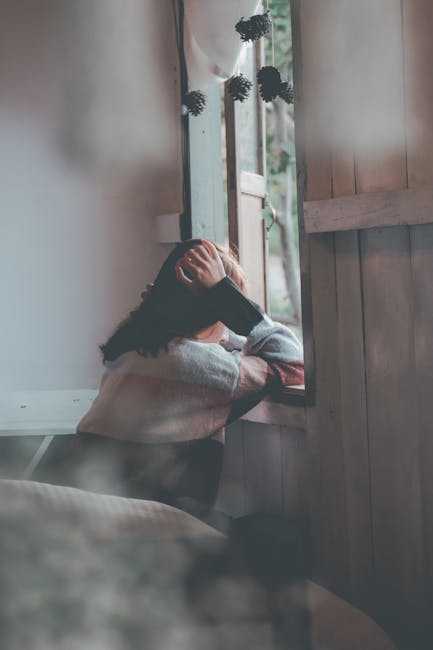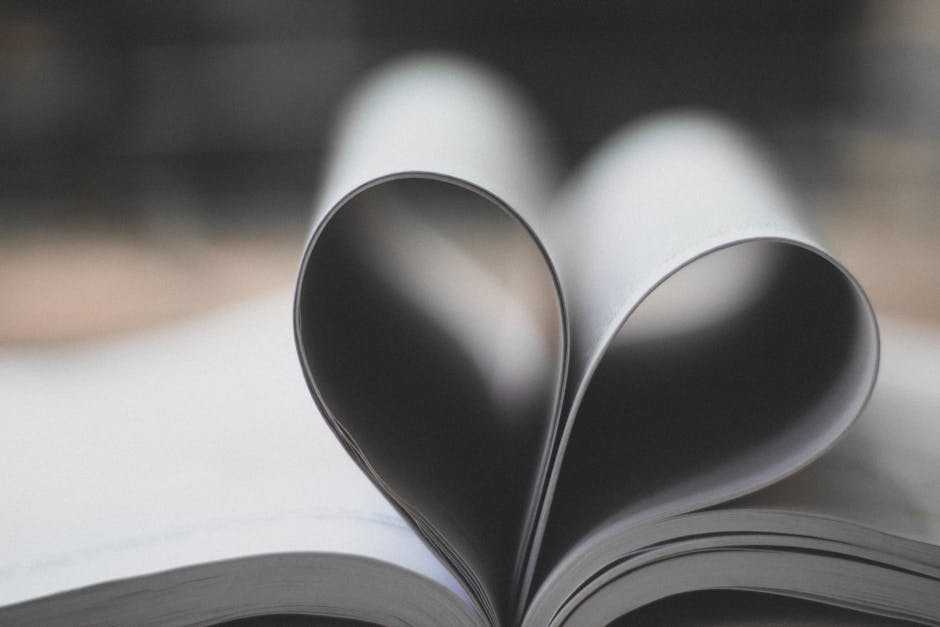Table of Contents
- Exploring the Emotional Significance of Heart Art
- Crafting Heart Art: Techniques and Materials for Every Artist
- Showcasing Heart Art in Your Home: Tips for Effective Display
- Supporting Artists: How to Find and Purchase Heart Art Creatively
- Q&A
- Key Takeaways


Exploring the Emotional Significance of Heart Art
Heart art transcends mere aesthetics; it serves as a powerful medium to convey complex emotions and sentiments. Artists from various backgrounds utilize heart shapes, symbols, and motifs to express feelings of love, pain, joy, and even resilience. This connection between the visual representation and emotional experience allows viewers to resonate on a personal level, turning simple images into profound messages.
In many cultures, hearts symbolize not only romantic love but also compassion, understanding, and unity. This versatility invites artists to explore heart motifs in diverse ways:
- Abstract interpretations that challenge traditional notions of love.
- Nature-inspired designs that marry the heart with organic forms.
- Mixed media works that combine various elements to depict layered emotions.
Moreover, the emotional significance of heart art extends into the realm of healing and self-discovery. Art therapy often employs heart-themed creative expressions to help individuals navigate their feelings, offering a safe space for exploration. By engaging with this type of art, many find solace and a sense of community, reinforcing the heart’s role as a universal symbol of connection.
As a reflection of our inner experiences, heart art can evoke powerful responses. Whether it’s the warm, vibrant hues of a painted heart or the intricate details of a sculpted piece, these artistic representations speak volumes. They serve as a reminder that beneath the surface lies a deep well of emotions, waiting to be explored and expressed through creativity.
Crafting Heart Art: Techniques and Materials for Every Artist
Creating heart art is a delightful journey that can be explored through various techniques and materials, allowing every artist—even beginners—to express their creativity. One popular technique is watercolor painting, where the fluid nature of the paint mimics the soft curves and edges of hearts. By layering transparent washes, you can achieve vibrant color gradients that make your artwork truly pop. Another technique is collage, where artists can gather various papers, photographs, and textures to construct a three-dimensional heart shape. This method not only adds depth to the artwork but also personalizes it with cherished memories.
The choice of materials plays a significant role in the creation of heart art. Acrylic paints offer versatility, allowing for quick drying and flexibility in techniques—from bold strokes to subtle blends. For artists who enjoy mixed media, consider using textured papers like handmade or embossed varieties, which can add an interesting dimension to your heart designs. Additionally, digital tools such as graphic design software can enable you to manipulate colors and shapes with precision, opening up endless possibilities for heart art.
When combining techniques and materials, an artist might experiment with string art to create heart designs where threads weave in and out of nails on a board, forming intricate patterns. This method provides a tactile experience while allowing for creativity in both color choices and string placement. Other unique ideas include embroidery, where artists can stitch hearts onto fabric, infusing fabric art with personal flair. This blend of art forms not only adds to the aesthetics but can also enhance texture and storytelling within the piece.
For those looking to explore the creative process, here’s a simple comparison table showcasing various heart art techniques and their suitable materials:
| Technique | Best Materials | Skill Level |
|---|---|---|
| Watercolor Painting | Watercolor paints, brushes, thick paper | Beginner |
| Collage | Magazines, scissors, glue, decorative papers | Beginner |
| String Art | String, nails, wooden board | Intermediate |
| Digital Art | Graphic software, tablet, stylus | Advanced |
By experimenting with different techniques and materials, you can find a unique style that resonates with your artistic vision while bringing the warmth and emotion of hearts into your creations.


Showcasing Heart Art in Your Home: Tips for Effective Display
When displaying heart art in your home, the key is to create a visually striking arrangement that conveys emotion and resonates with your personal style. One effective method is to use a gallery wall approach. This involves grouping various pieces of heart-themed art together, which can range from paintings and prints to photographs and mixed media. Make sure to choose frames that complement each piece while also aligning with your overall decor. Consider the scale and balance of your arrangement, ensuring that larger pieces anchor the display while smaller artworks add interest.
Lighting plays an essential role in enhancing the impact of heart art. Utilizing adjustable lighting can highlight specific pieces and create desired moods within the space. For instance, installing picture lights or using spotlights can draw attention to a central piece, while softer ambient lighting can create a warm, inviting atmosphere. Additionally, consider how natural light interacts with your artworks throughout the day; the changing light can add dynamic visual effects.
Don’t hesitate to infuse personal touches into your art display. Incorporating other items like textiles, plants, or sculptural pieces can create a layered look that enhances the heart art’s emotional resonance. For example, draping a textured textile behind the art can add depth, while adding greenery with plants can bring life to the display. Mixing different mediums is also a great way to maintain interest and vibrancy in your decor.
| Tip | Description |
|---|---|
| Frame Selection | Choose frames that complement both the art and your decor style. |
| Placement | Group pieces thoughtfully for an engaging arrangement. |
| Light it Up | Use lighting to accentuate your art pieces and create ambiance. |
| Personalize | Incorporate personal items or textures to enhance the theme. |


Supporting Artists: How to Find and Purchase Heart Art Creatively
Art has a unique ability to evoke emotions and spark conversations, and heart-themed artwork often resonates deeply with viewers. To find stunning pieces that speak to you, consider exploring local art fairs and galleries. These venues showcase the work of emerging artists who often create heart art that reflects their personal styles and cultural backgrounds. Engaging with artists directly not only supports their craft but also gives you insight into the inspiration behind their work, making your purchase more meaningful.
Another innovative way to discover heart art is through online platforms dedicated to showcasing independent creators. Websites like Etsy and Artfinder feature diverse selections, allowing you to filter by style, color, and medium. As you browse, look for limited edition prints, original paintings, or even handcrafted sculptures that catch your eye. This offers a convenient method to support artists globally while finding unique pieces to enhance your space.
If you’re on a budget, consider exploring community art initiatives or collaborative projects that often sell pieces at lower prices. These platforms prioritize accessibility and often focus on social causes; your purchase can contribute to larger community improvements or artistic outreach programs. Look for pop-up art events, charity auctions, or local artist co-ops that feature heart-themed art to find affordable treasures while making a positive impact.
Don’t overlook social media for artistic inspiration. Platforms like Instagram and Pinterest can lead you to lesser-known artists who prioritize unique and creative expressions of heart art. You can follow hashtags like #HeartArt, #ArtForACause, or #SupportLocalArtists to discover pieces and artists who resonate with your aesthetic. By sharing your favorites and encouraging your network to support these artists, you turn your passion for heart art into a broader movement to uplift creative talents.
Q&A
Q&A on Heart Art
Q1: What exactly is heart art? A: Heart art is a creative expression that uses the symbol of the heart to convey emotions, messages, and artistic narratives. It can take various forms, including paintings, sculptures, digital art, and crafts. The heart symbolizes love, compassion, and connection, making it a powerful motif in artistic endeavors.Q2: Why do artists choose the heart as a central theme? A: Artists often choose the heart as a theme because it resonates universally. Hearts evoke deep feelings and associations with love, joy, sadness, and healing. This makes the heart a versatile symbol that can be interpreted in numerous ways, allowing artists to connect with their audience on an emotional level.
Q3: What materials are commonly used in creating heart art? A: Heart art can be created with a wide array of materials. Traditional mediums include paint, clay, and paper, while contemporary artists might employ fabric, metal, or digital tools. The choice of material often reflects the artist’s personal style and the message they wish to convey.
Q4: Can heart art be used for therapeutic purposes? A: Yes, heart art can serve therapeutic purposes. Art therapy often incorporates heart symbols to help individuals express their feelings, process emotions, and heal through creativity. Creating or reflecting on heart-themed art can foster emotional healing and personal growth.
Q5: How can I create my own heart art? A: To create your own heart art, start by brainstorming what the heart represents to you. Gather your materials and choose a technique—painting, drawing, or sculpting. Don’t be afraid to experiment with colors and styles. Consider incorporating text or other visuals to enhance your message. Above all, let your emotions guide you.
Q6: What role does heart art play in culture and society? A: Heart art plays a significant role in culture and society by serving as a visual shorthand for love, hope, and unity. In various cultures, heart motifs can be seen in everything from greeting cards to public murals, reinforcing shared values and sentiments. During events like Valentine’s Day or social movements advocating for love and acceptance, heart art creates a sense of community and collective expression.
Q7: Where can I find heart art in everyday life? A: Heart art is ubiquitous in everyday life. You can find it in galleries, public installations, neighborhood murals, and even in local shops showcasing handmade crafts. Online platforms like Etsy and Instagram also abound with artists sharing their heart-inspired creations, making it easy to discover and appreciate this heartfelt form of art.
Q8: Are there famous artists known for their heart-themed works? A: Yes, several artists are renowned for their heart-themed works. One notable example is American artist Jim Dine, who has extensively used heart imagery in his pieces, exploring themes of love and vulnerability. Additionally, modern street artists like KAWS and Banksy have also incorporated heart motifs into their works, each bringing their own unique interpretation to the symbol.
Q9: How can heart art foster connections among people? A: Heart art fosters connections by evoking shared emotions and experiences. Whether displayed in a community setting, given as a gift, or shared on social media, heart art encourages dialogue and empathy among individuals. It reminds us of our common humanity and the universal need for love and understanding.
Q10: What can I do to support heart artists? A: Supporting heart artists can be as simple as purchasing their work, attending exhibitions, or promoting them on social media. Engaging with local art communities, sharing your favorite pieces, and participating in heart-themed workshops also contribute to the growth and visibility of artists striving to spread love through their art.
